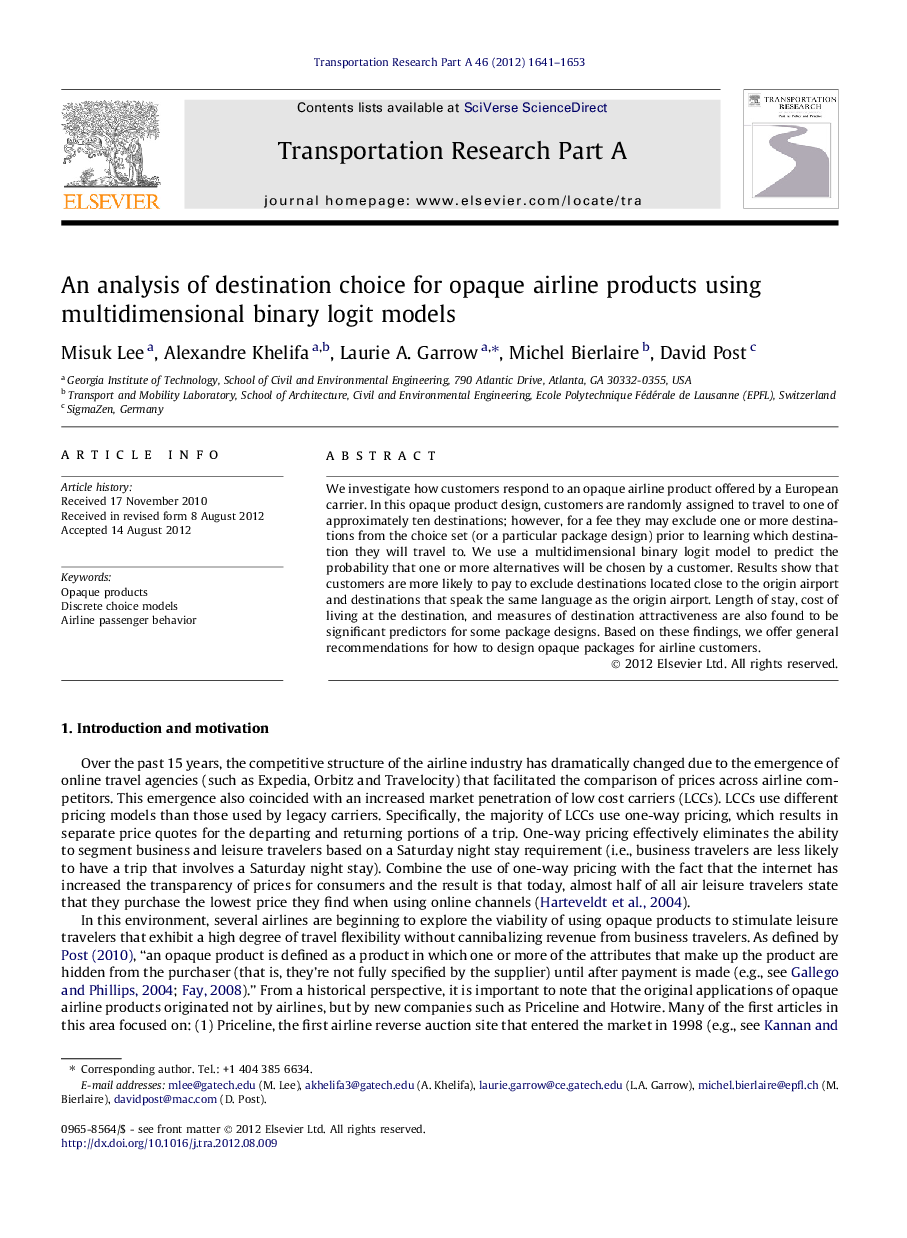| Article ID | Journal | Published Year | Pages | File Type |
|---|---|---|---|---|
| 311563 | Transportation Research Part A: Policy and Practice | 2012 | 13 Pages |
We investigate how customers respond to an opaque airline product offered by a European carrier. In this opaque product design, customers are randomly assigned to travel to one of approximately ten destinations; however, for a fee they may exclude one or more destinations from the choice set (or a particular package design) prior to learning which destination they will travel to. We use a multidimensional binary logit model to predict the probability that one or more alternatives will be chosen by a customer. Results show that customers are more likely to pay to exclude destinations located close to the origin airport and destinations that speak the same language as the origin airport. Length of stay, cost of living at the destination, and measures of destination attractiveness are also found to be significant predictors for some package designs. Based on these findings, we offer general recommendations for how to design opaque packages for airline customers.
► We model opaque destination purchases using multidimensional binary logit. ► Distance, city attractiveness, length of stay influence purchase probabilities. ► Results provide insights into how airlines can design profitable opaque packages.
